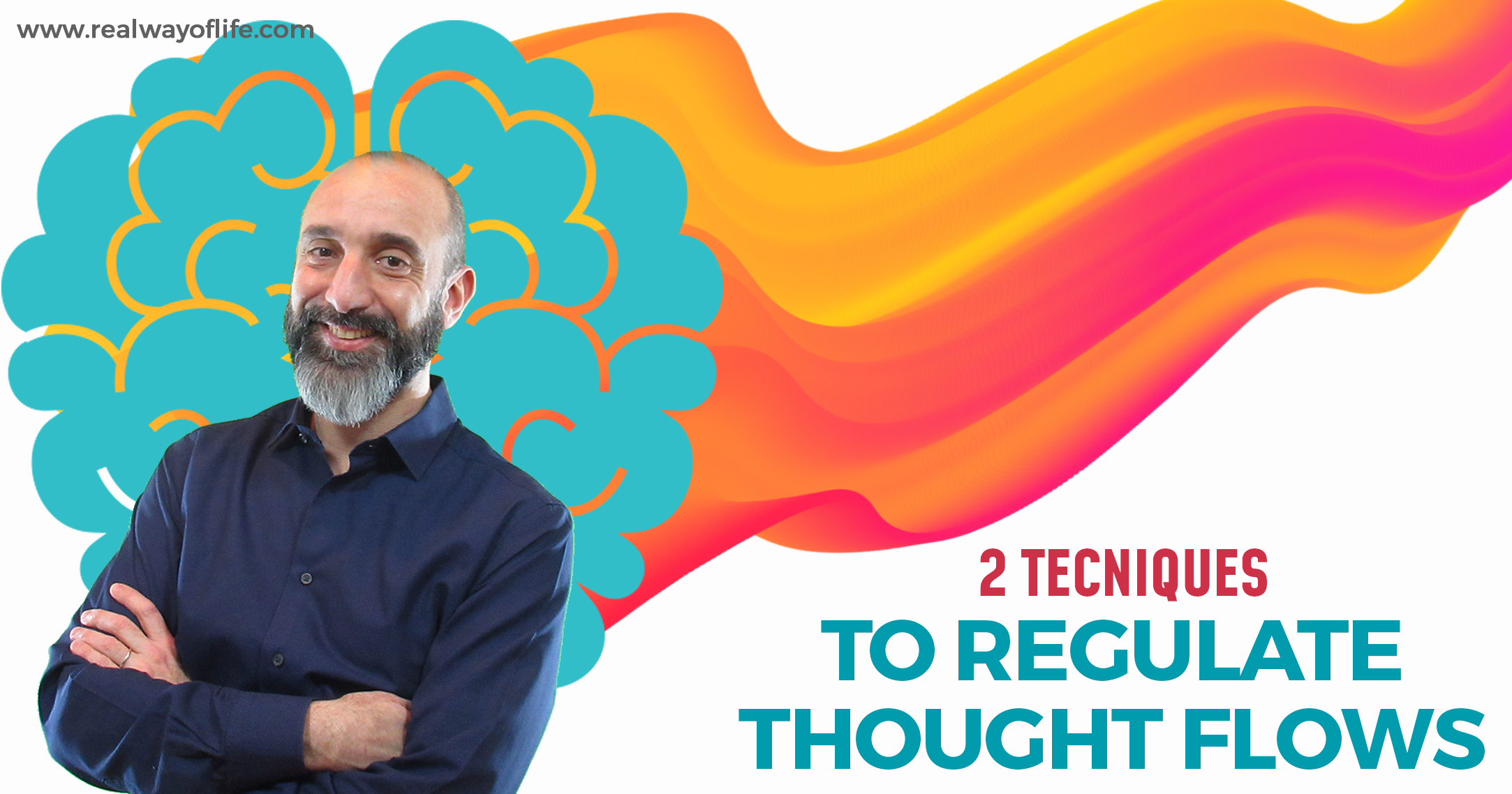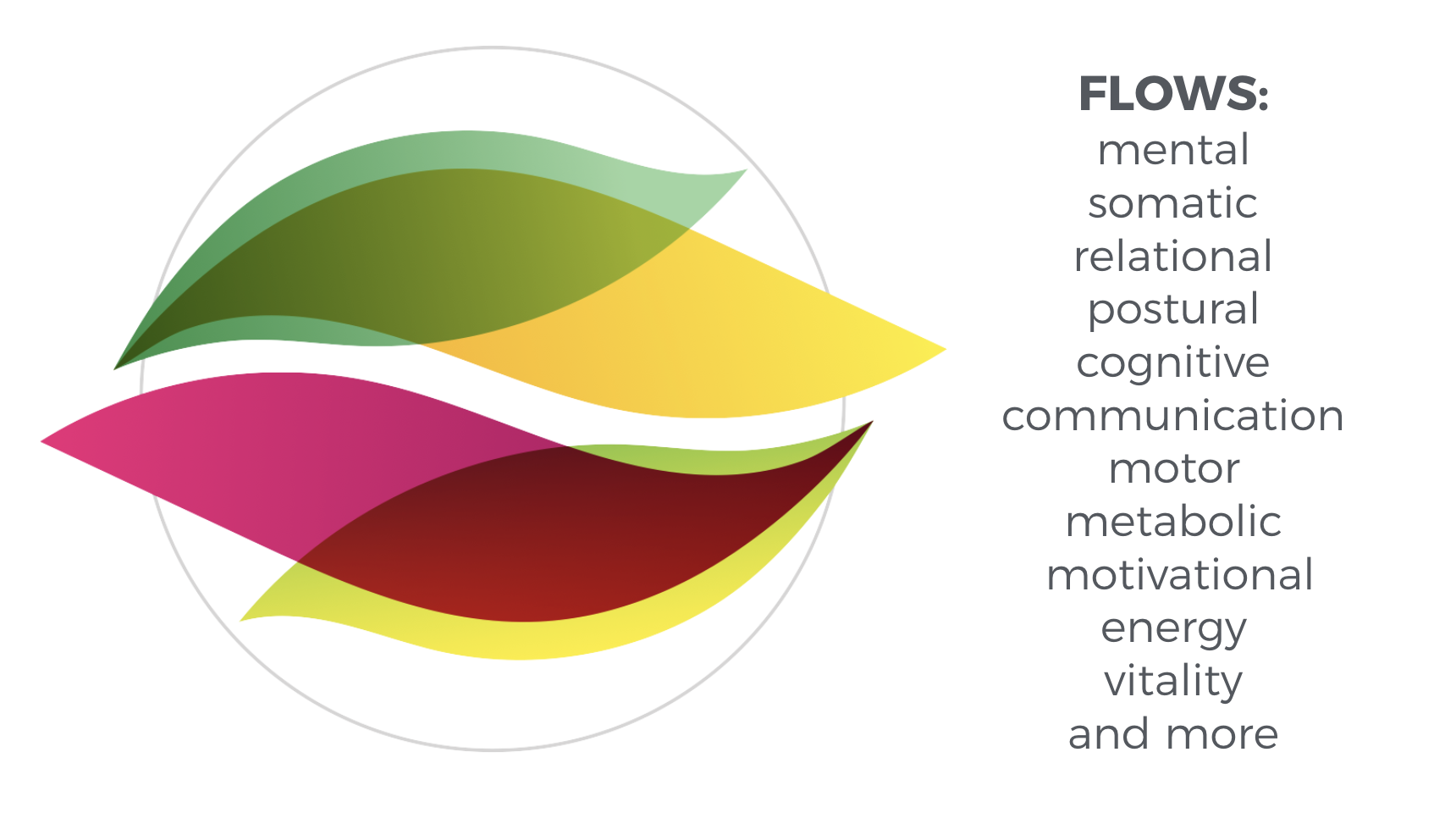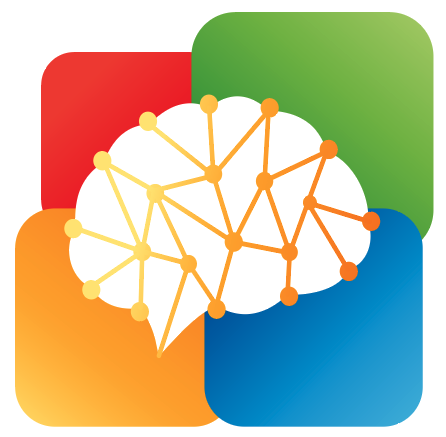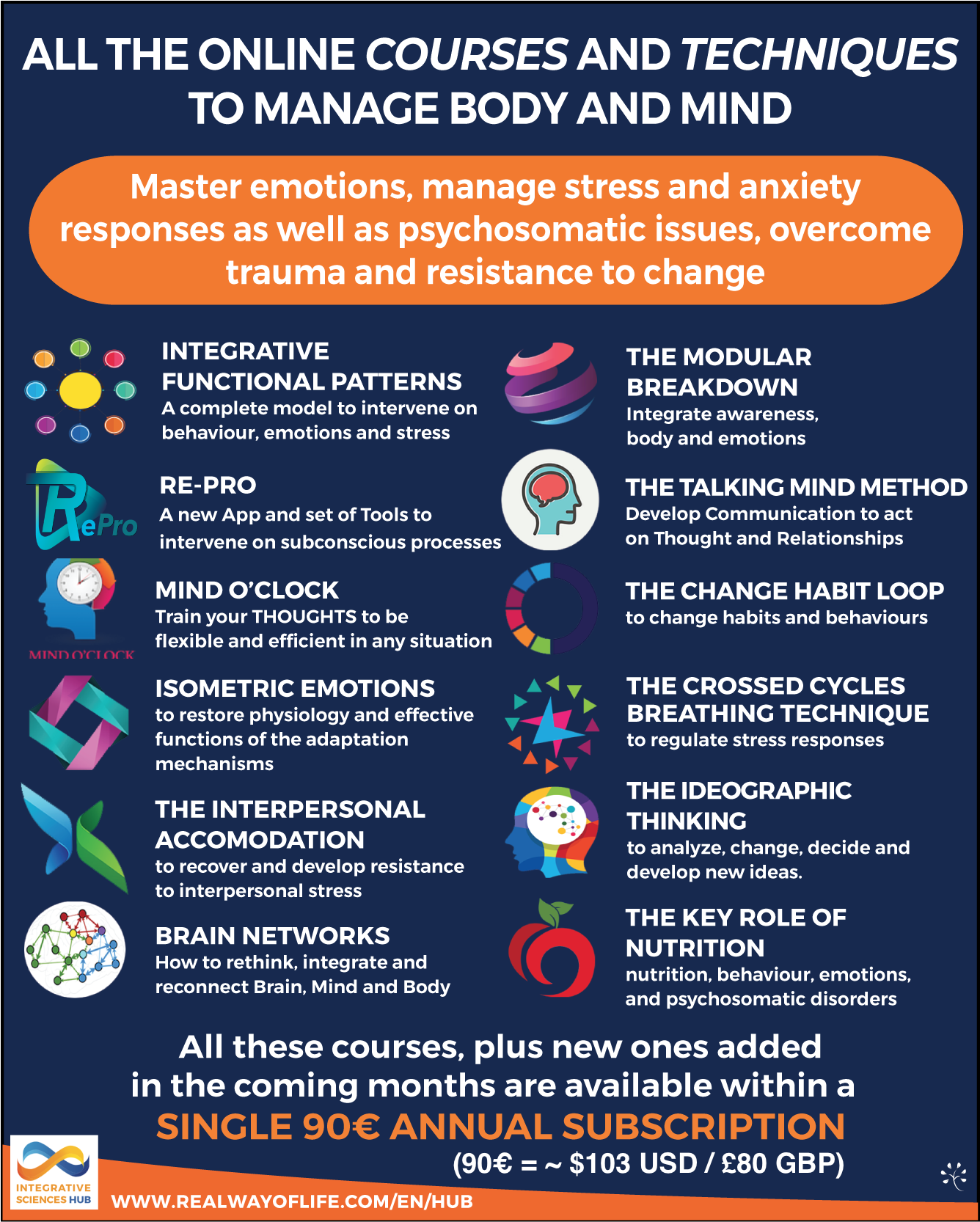
21 Feb Two techniques to regulate thought flows
There are deep connections between the way people speak, think and feel. These go beyond the feeling connected to a specific thought. Rather, we are referring to the coherence that a single thought may have with a wider thought environment, with the contingent situation and its potential interaction with other people’s thoughts and beliefs.
When a child is obliged to say sorry or to say hello to a relative, for example, the speed of their words, the melody and the way the single letters are enunciated are totally different to when these actions are spontaneous. These alterations alert us to the effort and unnatural strain these words and associated thoughts require.

Img. – The Flows symbol visually represents the fluid flow and connection between the different levels that flows are formed in. Discover more about the Flows and the Switches.
These processes are also clearly visible in adults when there is no external obligation, but some other intervening factor. Typically, this is what happens when we say ‘Noooo’ lengthening the ‘o’ sound to underline our rage, or to push back further pressure. By contrast we often hear people say ‘come on’ with different intensities and durations depending on how comfortable they feel about motivating the other person. Although these are very short words, the person’s embarrassment, anger, worry regarding potential consequences or unwillingness, clearly transpire.
The cinema and theatre also provide interesting food for thought: great leaders are always represented as slow speakers that do not follow traditional punctuation. These elements are intuitively perceived by the spectator as indicators of self-control and independent thinking in real life too.
Another important feature of thought flows relates to the more-or-less flexible employment of specific thought schemas. So-called overthinkers, or those that tend to think all the time, for example, go over the same content again and again in the same fashion. They cannot stop doing this as it is the only form of (attempted) control available to them.
Anyone that is familiar with studying music will notice an analogy with that process of learning a new instrument: when the amateur tries to play freely they will continue to repeat the same accompaniments and key changes. This happens because these are the only modes of expression with which they are confident. As the repertoire for expression increases, more targeted choices are made and new more personal structures are introduced. Overthinkers do the same thing: they only have a few modalities that they continue to apply repeatedly, but these are rarely suited to solving a specific problem and rarely provide added value.
Considering what we have seen, it is critical to expand our repertoire of thought-modes to regain control and produce value-add in the management of complex situations and as ample as possible timeframes and standpoints.
 This repertoire can be extended to cover modes and schemas that are suited to the objectives, context, audience, dominant culture, social mores etc. To achieve this, some of the schemas and suggestions provided in the Emotion & Behaviour Modulation technique can be used.
This repertoire can be extended to cover modes and schemas that are suited to the objectives, context, audience, dominant culture, social mores etc. To achieve this, some of the schemas and suggestions provided in the Emotion & Behaviour Modulation technique can be used.
There are also more targeted techniques that focus specifically on thought flows such as the Mind O’Clock technique, or ones that focus more on the integration of thought flows and movement, such as the Turn your Mind technique.
1. The Mind O’Clock technique
If you drive a sports car at top speed over a bumpy road you are not using it to its full potential. The same goes for thought, although we often have the dysfunctional tendency to think that ‘rapid thought’ is ‘efficient thought’. As soon as we are faced with a problem we try to think as rapidly as possible, but this often doesn’t work, rather we generate more anxiety. It’s not the number of words thought, but their quality and the structure of thought that makes a difference!

The Mind O’Clock technique includes a series of exercises that help thought practice a more useful rhythm in a specific situation, whether you need to remain concentrated, face a stressful event or danger. It can be carried out in interaction with an external sound stimulus such as a metronome, or through two-way interaction with other adaptation rhythms such as that of breathing, heartbeats or pacing.
You can start with any thought and repeat it at different speeds, carefully separating words or changing their natural flow, which is often just the result of old automatisms.
You can even try thinking anxiety generating thoughts at a slow rate and pleasant thoughts rapidly, thus highlighting how often it is just the way of thinking that poses a problem, regardless of the content.
➜ Learn the Mind o’Clock technique in a free to access video course.
2. The Turn your Mind technique
The Turn your Mind technique also works on thought flows, but mainly focuses on the ability to rapidly change theme within your control. It’s a veritable ‘switch’ technique as it works on simultaneous changes of mode.
The basic version involves the change of thought themes at regular intervals, such as every 30 to 60 seconds. Our suggestion, based on research and experience, is to alternate positive and negative pairs of thoughts on the same theme and then decline them across various levels.
The following basic thought sequence is a good example for rotation:
- Negative things about me;
- Positive things about me;
- Negative things about others (friend, partner, colleague etc.);
- Positive things about others;
- Negative things about a group (of friends, of co-workers, of the family etc.);
- Positive things about the group and so on.
Significant changes to other flows combine with these “mind swerves”. You can, for example, change the direction you are walking in, the way you walk, the music you are listening to and so on.
There is a lot of potential in working on these alternations: changing themes and durations, mixing the order of sentences, slotting in other changes.
The mind thus practices focusing willingly and single-mindedly on the desired theme.
On the other hand, this is also a way of teaching the mind important abilities through experience such as:
- Serenely leaving an issue unresolved;
- Awaiting the right moment to tackle it with confidence;
- Analysing the issue from different angles;
- Distancing ourselves from our flow of thought;
- Differentiating between exploratory thought, evaluation and decisions.
Do you want to know more practical techniques?
Discover the Integrative Sciences HUB, your online training center, where you can find new courses, techniques and tools every month.




